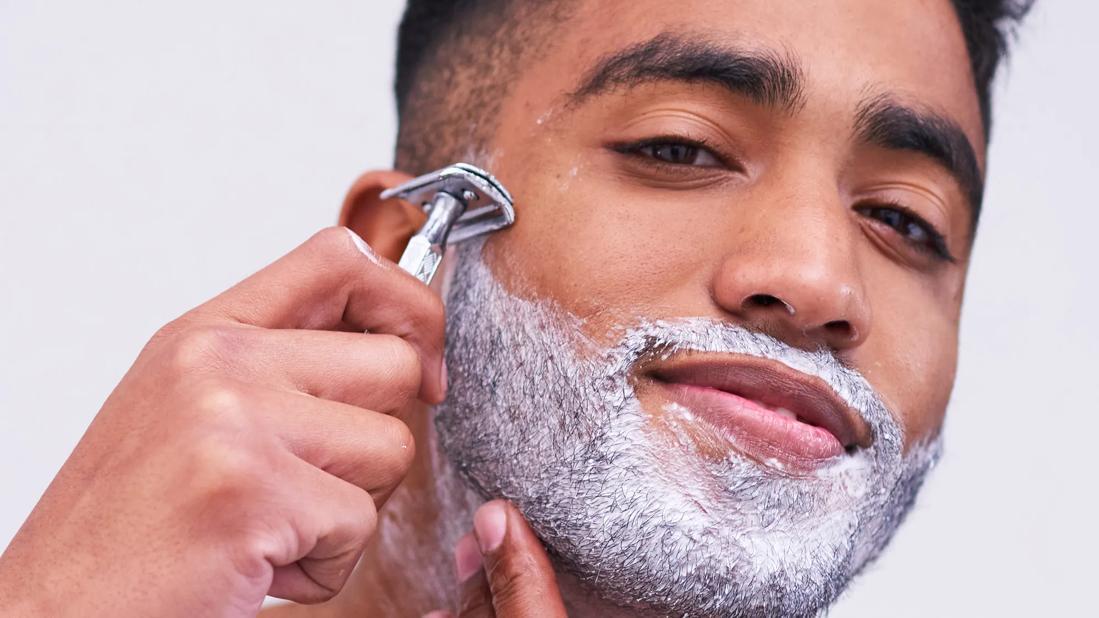Learn How To Get a Smooth Shave Every Time
Soften your skin with warm water and shaving cream before shaving with the grain of the hair

Trying to get a good shave can be hit or miss. Cuts. Bumps. Razor burn. You might wonder why you don’t always get the smooth result you see in those razor-sharp shaving commercials.
The problem, says dermatologist Shilpi Khetarpal, MD, might be in how you shave or the products you use before, during and after your routine.
Shaving steps
No one wants cuts, ingrown hairs and other undesirable effects of shaving. That’s true wherever your razor roams, from your face, underarms and legs to more intimate areas of your body.
To avoid mishaps, you’ll want to perfect your shaving process. Next time you pick up a razor, try this approach.
Before shaving
The key to a smooth shave starts with how you prep your skin. A lot of people wonder: Should you exfoliate before or after shaving?
Exfoliating beforehand actually helps remove some of your dead skin cells and helps prevent ingrown hairs — but that’s just one step you can take to get a smooth shave. Here’s how to prepare:
- Wet your skin with warm water by taking a shower or using a warm, wet washcloth.
- Use a loofah or other methods to gently exfoliate your skin.
- Apply shaving cream or gel to soften your skin and help your razor glide more easily. Soap and water usually aren’t enough. They can sometimes dry out your skin, which can cause your hair to catch in the razor.
Shaving
Follow these steps once you’ve prepped your skin:
- Use a new or sharp razor. If it’s too dull, it can tug at your hair and cause irritation.
- On your first pass through, shave with the grain (in the direction your hair grows). So, if you’re shaving your leg, start at your thigh or knee area and work your way to your ankle. When it comes to your face, shave from your cheeks to your chin, as your hair tends to grow down. Butwhen shaving your neck, shave up toward your chin, as your neck hair tends to grow in the opposite direction.
- If you want a closer shave, do a second pass through by shaving in the opposite direction against the grain. While this provides the smoothest shave, it does bring a higher risk of ingrown hairs and irritation.
- Rinse your razor frequently with warm water while shaving to prevent clogging.
After shaving
When you’re done shaving:
- Rinse with cold water. Dr. Khetarpal says this helps close your pores and prevent bacteria, dirt and other irritants from getting in.
- After drying off, apply moisturizer to rehydrate your skin and prevent irritation or flakiness.
- Store your razor in a cool, dry place.
Razor care tips
You know you should get a new razor if you:
- Notice rust, cracks or chips on the blade
- Have to exert more pressure to get a clean shave
- Experience more tugging or irritation than usual
“Razor blades tend to last for up to five to 10 shaves, and some may last a month or longer, depending on how often you use them,” reports Dr. Khetarpal.
Shaving and sun sensitivity
Dr. Khetarpal also notes that shaving your skin makes it more sensitive to the sun, so you’ll want to put on sunscreen whenever your shaving routine is complete.
“Ideally, you would wait 24 hours before exposing freshly shaved skin to extended periods in the sun,” recommends Dr. Khetarpal. “When you do venture out to enjoy the warmer weather, use a broad-spectrum sunscreen with SPF of at least 30 and reapply after swimming in water or after sweating.”